A trip to London requires planning, an ample budget and a lot of friendly sofas to sleep on. All these elements came together last week and I went in search of some refreshing cultural adventures.
For the last several months I’ve been working on something in Nottingham (that I hope to be able to tell you about soon). The project has renewed my interest in architectural history (see my earlier blog on Watson Fothergill) and sent me off in several directions.
Trying to track down the provenance of a stained glass window attributed to William Morris and Edward Burne-Jones, but produced after both their deaths, led me to the local library and Fiona McCarthy‘s hefty biographies.
Having enjoyed both books, particularly William Morris: A Life for Our Time, I resolved to see some of their art and in the case of Morris, the house he built on the outskirts of London.
I had a wish list of things I wanted to see while I was in London and I managed to pull quite a few of them in along with a few other pleasant surprises along the way.
First, The Wellcome Collection, within striking distance of Kings Cross/ St Pancras and with a friendly cloakroom to relieve me of my suitcase for a few hours. I queued for a while to be admitted to a room full of coloured mist, a reboot for the senses – an art installation, States of Mind, a prelude to a larger exhibition about “consciousness” due to start next year.
With time to wander, I fulfilled a long held ambition to find the grave stone of Mary Wollstonecraft in Old St Pancras Church Yard. This is also home to the Soane monument (the shape of which inspired the design of the telephone box – a fact I learned on my last visit to London when, unable to get into an overbooked exhibition at the British Library, I visited the unexpected delight of Sir John Soane’s Museum, of whom more later). Loose ends were starting to be tied up, it was Fiona McCarthy’s insightful biography of Lord Byron that had piqued my interest in Shelley and Mary who were known to tryst at her mother’s grave…
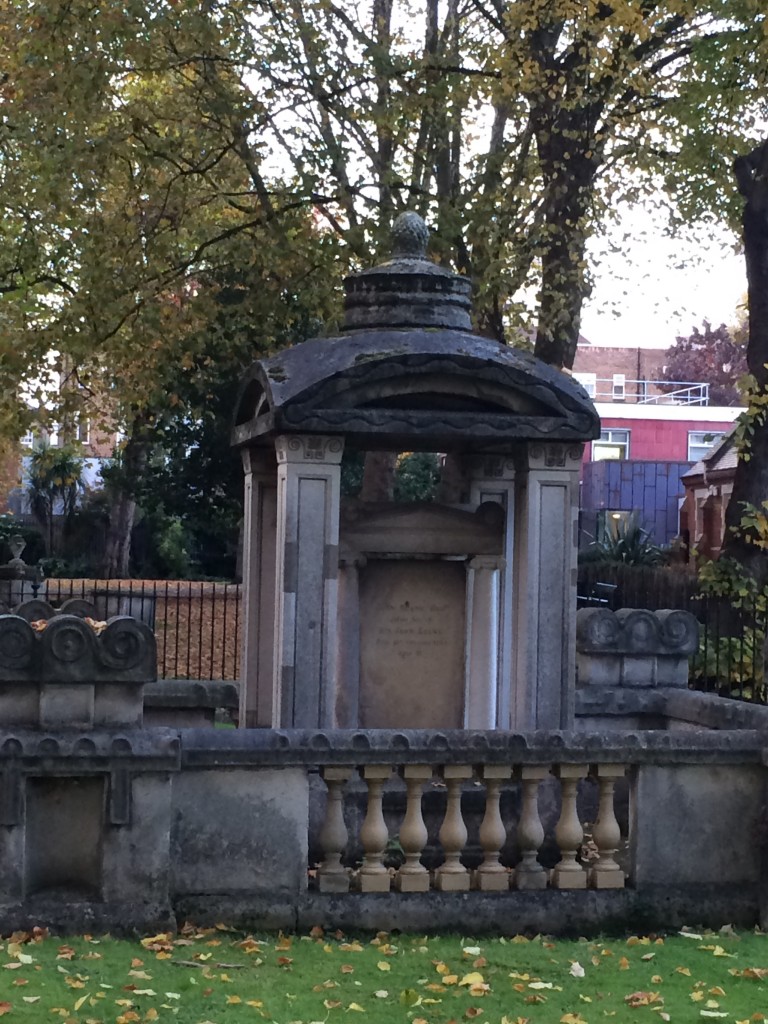
The following day I had planned to visit the V&A, whose tearooms alone are a treasure trove of Morris & Co designs, but on the way there I got distracted. I’d spotted a striking poster for an exhibition at RIBA – on Palladian architecture. Having never visited their Portland Place HQ before, I was impressed by the building and even more taken with the clean, well arranged exhibition of drawings and models.
By the time I reached Kensington, the full armageddon of half-term week in museum-land had hit and I abandoned hopes of the V&A in favour of retaining a shred of sanity. Towing a case around London limits what you can do and I fell back on one of my favourite places, which just happens to have a spacious free cloakroom, The National Portrait Gallery. I seemed to be the only person who’d read the small print and found the app to accompany Simon Schama’s Face of Britain exhibition and I let his distinctive tones guide me… The dots continued to be joined – a portrait of William Morris’s wife Jane appeared in the ‘Love’ section.
The next day, relieved of the burden of my case, I decided to pull in another visit I’d been thinking about for a long time. The Banqueting House, the last vestige of Whitehall Palace – and Britain’s first Palladian building. An exercise in well guided tourism – with not only a comprehensive audio guide, but also an eager and entertaining steward keen to talk the handful of visitors through the history of this hidden gem. Currently undergoing restoration on the outside, the stone work was originally refaced by Sir John Soane (and the connections on this trip just keep mounting up).
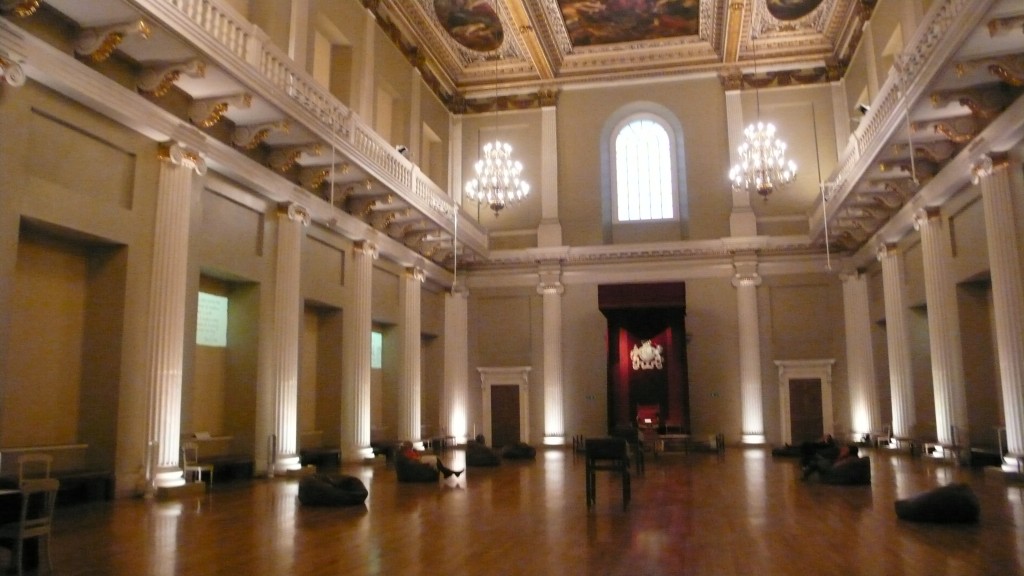
I then took a train out to Bexleyheath and found The Red House, which William Morris and his wife had built and lived in between 1860 and 1865. Despite being there for only a short time, it was pivotal in the creation of his design business, eventually called Morris & Co and its very walls tell stories of the decorating parties held there with artists, poets and other luminaries of the period all contributing to the patterns and schemes which the National Trust are still discovering hidden under the modern wallpaper. The purpose-built house has a studio space to make even the most casual artist jealous, full of space and light. It was easy to imagine the “Topsy” of McCarthy’s biography in these rooms. I picked a windfall from the orchard and put an oak leaf in my pocket, hoping that some of the inspiration would rub off.

Dante Gabriel Rossetti, who was often at The Red House, was fascinated by wombats and kept them as pets. He often drew caricatures of his friend (and rival for the affections of Mrs Morris) where the roly poly animal stands in for the artist. He even named one of his wombats Topsy. The National Trust have instigated a Wombat Hunt for The Red House’s younger visitors. Cuddly marsupials abound in each room…
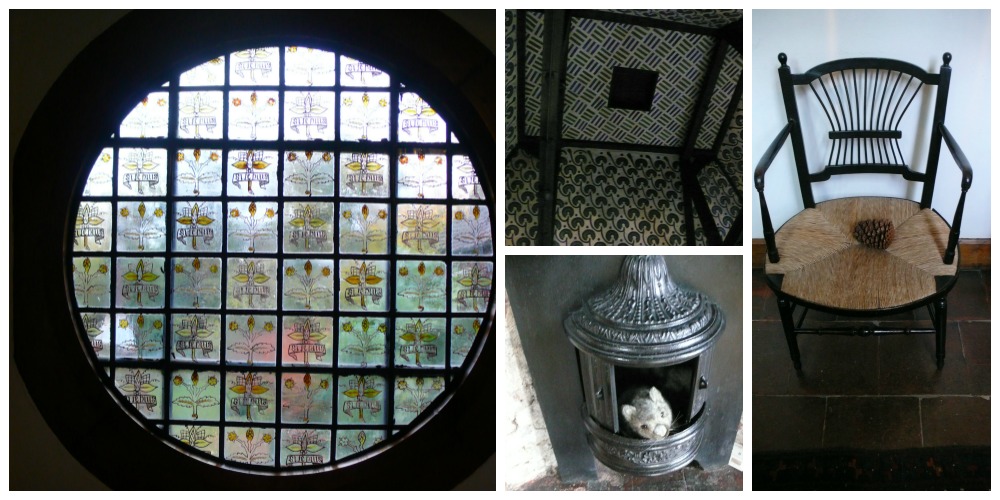
A conversation over the Wallpaper pattern books in the Morris children’s old bedroom prompted me to investigate the William Morris Gallery in Walthamstow and the next day I headed out to the furthest stop on the Victoria line to find a rather wonderful Georgian Mansion where Morris lived for part of his childhood.
It has been refurbished as a gallery with space for contemporary exhibitions as well as an archive of objects from his life and work. My favourite items being his extra large cup and saucer and the leather satchel he took around the country when engaged in socialist lectures later in his life.
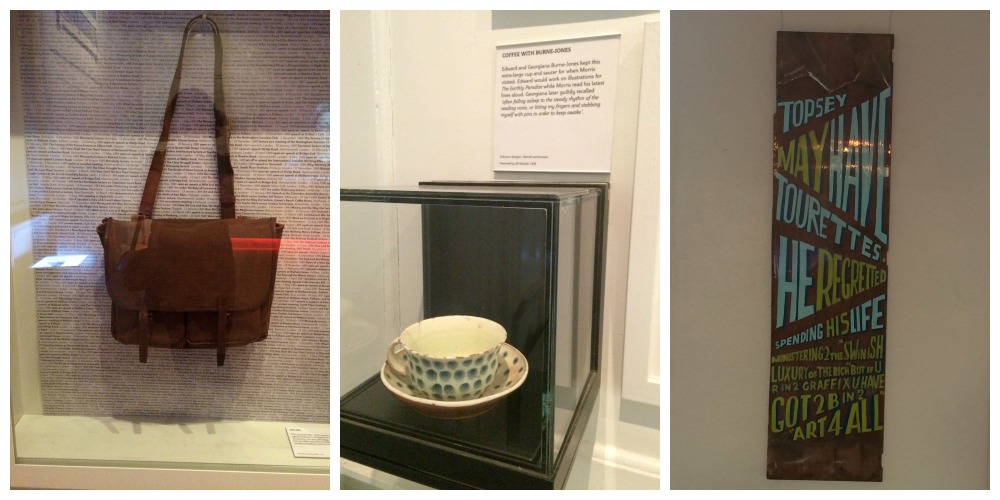
Above all, Morris seems to have been someone who possessed great enthusiasms, about poetry, art, fairness and fellowship. The gallery does a great job of bringing these to life. The accompanying exhibition documenting Bob & Roberta Smith’s campaign to save arts education for children chimed well with the themes of Morris’s own life and the continuing relevance of his ideas.
I headed back on the Victoria line to Pimlico and Tate Britain, to wallow in the room full of paintings by Rosetti and Burne-Jones.
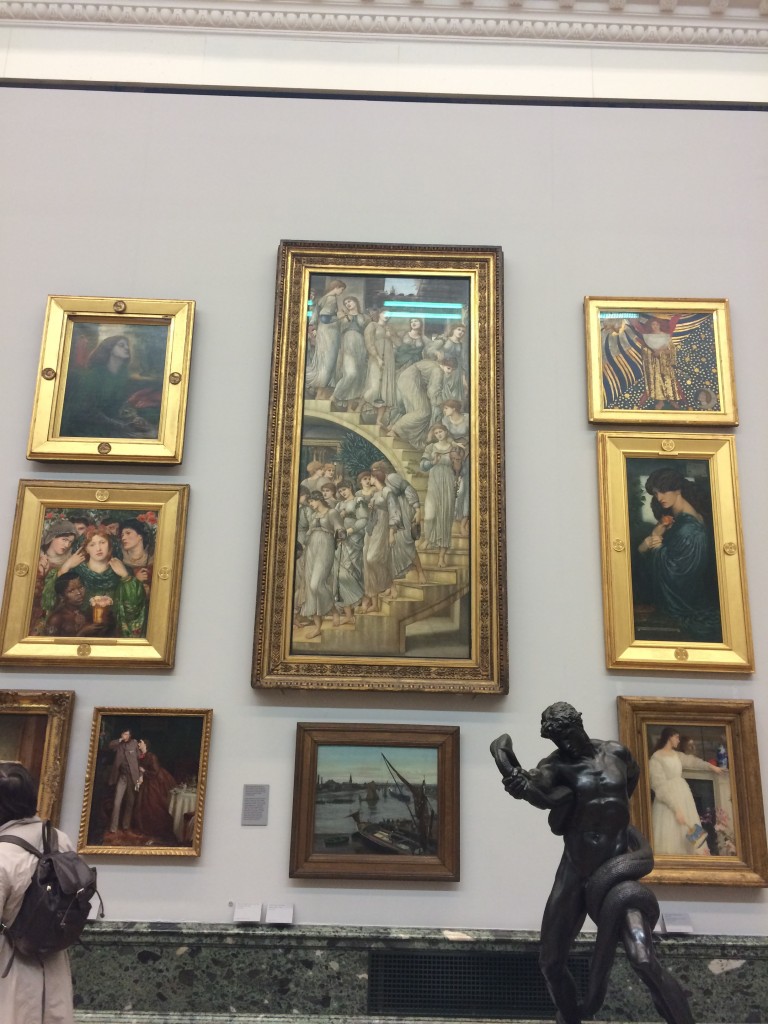
The evening ended up with a visit to an old friend in Deptford – where there are so many stories and secret places it will need a blog all of its own…
Saturday began with a trip to Borough Market, a walk along the Thames (pausing to look in at the Tate Modern’s Turbine Hall and taking a ride in the singing lift at the Royal Festival Hall). Tea in the Crypt at St Martin’s In the Field (another Palladian building), then using up the last of my energy for one more exhibition – Goya: The Portraits at the National Gallery, which was crowded and expensive but still impressive.
